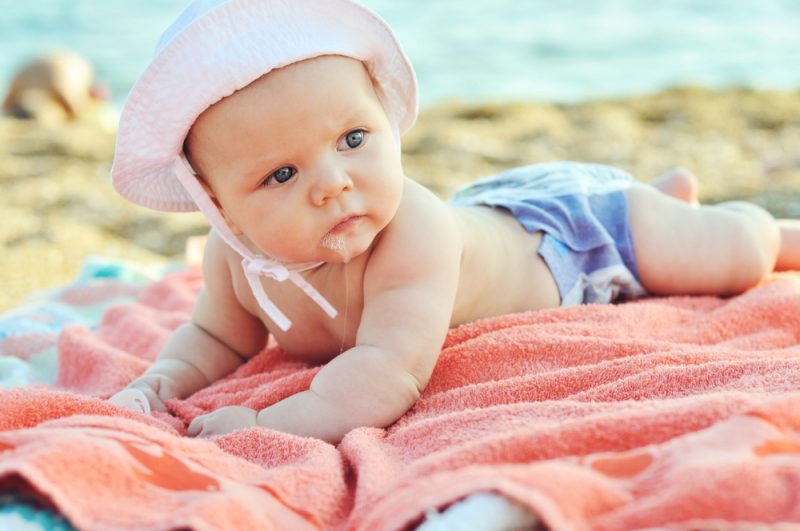
It may come as no surprise that babies’ soft, smooth and delicate skin is more vulnerable to sunburn than adults. Their skin is more sensitive to the sun’s ultraviolet rays because it’s not as developed as adults’ skin.
But did you know babies also are more susceptible to long-term damage from sunburn? Studies show one blistering sunburn during early childhood can more than double a child’s risk for melanoma as an adult, according to the Skin Cancer Foundation.
The good news is sunburn is highly preventable, and a baby’s best defense against it is to avoid sun exposure altogether.
“Parents can block the sun’s rays by covering their babies up and limiting sun exposure during peak hours, from 10 a.m. to 4 p.m.,” said Dr. Susan Shah, a pediatrician at Akron Children’s Pediatrics, Twinsburg. “The American Academy of Pediatrics (AAP) recommends dressing babies in lightweight long pants and long-sleeved shirts, with brimmed hats that protect the ears, face and neck.”
If shade isn’t available, sunscreen is the next-best defense for babies 6 months and older. Choose one that is broad spectrum, which means it blocks both UVB and UVA rays, and apply it 30 minutes before going out into the sun.
The AAP recommends a sunscreen with a sun protection factor (SPF) of at least 15, which blocks 93 percent of UVB rays. Higher SPFs provide even greater protection, but only to a certain point. A sunscreen with an SPF 30 blocks about 97 percent of UVB rays, and one with an SPF 50 or more blocks about 98 percent.
Don’t forget to apply sunscreen to inconspicuous areas, such as the ears, tops of feet, and behind the knees and neck. Also, lift up your baby’s bathing suit straps, and apply sunscreen underneath them. Straps will shift with your squirmy baby and often is a cause of sunburns.
“Sunscreen should be reapplied every 2 hours, especially if you take a dip in the water with your baby,” said Dr. Shah. “Also, water and sand can reflect the sun’s rays and result in sunburn more quickly, so use extra precaution when at the beach.”
When purchasing sunscreen, look for ingredients such as zinc oxide or titanium dioxide. These ingredients are sometimes less irritating because they physically block rays and don’t get absorbed into the skin. Dr. Shah recommends avoiding sunscreens that contain PABA or oxybenzone, which penetrate the skin and have been associated with skin reactions and other harmful side effects.
In addition, dress your baby in clothing with UV protection. It should have a tight weave where you can’t easily see light through it. Babies 6 months and older also should wear sunglasses that offer 99 percent UVA and UVB protection and are shatter-resistant. And, don’t forget a lip balm with an SPF of at least 15.
“Even if it’s cloudy outside, don’t be fooled,” said Dr. Shah. “Up to 80 percent of UV rays still penetrate clouds. A good rule of thumb to follow is to apply sunscreen on your baby anytime skin is exposed to the sun’s damaging rays.”
If you have additional questions or concerns about sun protection, contact your child’s pediatrician. Telehealth appointments are now available.










